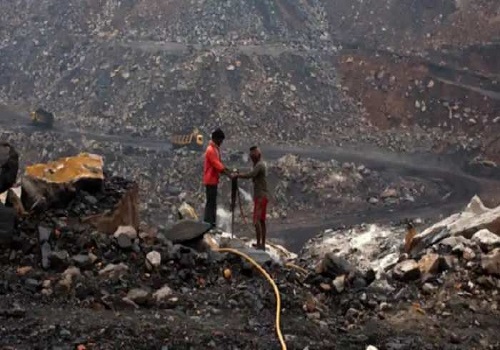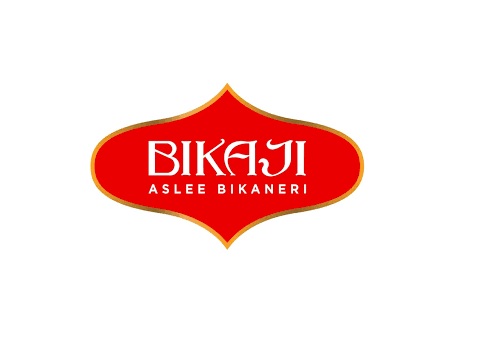Oil and Gas Sector Update : Crude price: OPEC+ puts a floor, demand uncertainty a cap By JM Financial

Follow us Now on Telegram ! Get daily 10 - 12 important updates on Business, Finance and Investment. Join our Telegram Channel
Brent crude price has been capped in recent months due to demand concerns amidst macro uncertainty. However, IEA raised its CY23 global oil demand growth estimate again, by 0.2mmbpd to 2.4mmbpd, due to stronger-than-expected rebound in Chinese oil demand, though it expects demand growth to moderate from CY24 at 0.9mmbpd. On the other hand, global oil supply declined by 0.6mmbpd MoM in May’23 led by OPEC+ output cuts with Russia’s crude output down 150kbpd MoM and oil exports down 260kbpd MoM in May’23. Hence, IEA has reiterated that OPEC+ output cut along with strong demand growth will push the market into deficit. We believe OPEC+ will continue to support Brent crude price at ~USD 75-80/bbl, which is the fiscal break-even crude price for Saudi Arabia. The pricing power of OPEC+ has strengthened due to muted growth in US crude output while OPEC+ has showed strong ability to cut output (it cut production by a huge ~10mmbpd in early CY20 to offset the collapse in demand post Covid). Hence, the new normal for Brent crude price could be ~USD 75-80/bbl (except in the event of a global macro shock). That price is a sweet spot for ONGC/Oil India. We maintain BUY on ONGC (TP INR 200) and Oil India (TP INR 315) given strong dividend play and also because CMP is discounting ~USD 55-60/bbl net crude realisation. However, optimism on OMCs will be contingent on crude sustaining below ~USD 75-80/bbl and duration for which OMCs are allowed to earn above normal marketing margin to recoup FY23 losses.
* IEA raises CY23 global oil demand growth estimate yet again, by 0.2mmbpd to 2.4mmbpd, though it expects demand growth to moderate from CY24: IEA, in its Jun’23 Oil Market report, has once again raised its global oil demand growth estimate for CY23, by 0.2mmbpd to 2.4mmbpd (estimated CY23 oil demand at 102.3mmbpd, up ~2.6mmbpd vs. CY19 preCovid levels) due to stronger-than-expected rebound in Chinese oil demand (record demand of 16.3mmbpd in Apr’23) - Exhibit 1-2. China is likely to account for ~60% of global oil demand growth of ~2.4mmbpd led by rebound in international travel and chemical feedstock. Hence, non-OECD countries will account for 90% of CY23 oil demand growth with OECD countries accounting for only 10% of growth due to warmer weather and subdued economic growth. However, IEA expects global oil demand growth to moderate to 0.9mmbpd in CY24 (at 103.1mmbpd) as the post-Covid rebound abates, and due to macro headwinds after unprecedented monetary tightening.
* OECD industry oil inventory rose by ~34mmbbl MoM in Apr’23, but still ~86mmbbl below 5- year average: By end-Apr’23, OECD’s industry oil inventory rose by ~34mmbbl MoM to ~2,800mmbbl. However, the deficit to the 5-year average inventory levels continues to be still at ~86mmbbl. Preliminary data show further OECD inventory build-up of 21mmbbl in May’23. (Exhibit 3).
* Global oil supply declined by 0.6mmbpd MoM in May’23 led by OPEC+ output cuts; OPEC+ output is still 1.7mmbpd below target: Global oil supply declined by 600kbpd MoM to 100.6mmbpd in May’23 driven by decline in OPEC’s May’23 output by 380kbpd MoM to 28.5mmbpd as voluntary output cuts came into effect. The decline was led by Saudi Arabia (down 500kbpd to 9.98mmbpd), UAE (down 120kbpd to 3.2mmbpd), and Kuwait (down 110kbpd MoM to 2.57mmbpd), though it was partly offset by rise in output in Iran (up 80kbpd MoM to 2.87mmbpd) and Nigeria (up 200kbpd MoM to 1.22mmbpd). OPEC+ output was 620kbpd MoM to 43.36mmbpd with Russia’s output down 150kbpd MoM to 9.85mmbpd; OPEC+ output is still ~1.7mmbpd below its target. (Exhibit 4-5).
* Russia’s crude output down 150kbpd MoM while oil exports declined 260kbpd MoM in May’23: Russia’s crude output was down 150kbpd MoM to 9.85mmbpd in May’23 (though still lower that announced cut of 0.5mmbpd) — Exhibit 5. Russia’s oil exports in May’23 declined by 260kbpd MoM to 7.8mmbpd, flattish YoY, with crude oil exports up 90kbpd MoM to ~5.2mmbpd, while oil product exports declined another 350kbpd MoM to ~2.6mmbpd. Hence, Russia’s export revenue fell USD 1.4bn MoM to USD 13.3bn in May’23 (down 36% YoY) due to narrowing discount for its Urals crude with average crude prices easing from USD 60/bbl in Apr’23 to USD 55/bbl in May’23. China and India together accounted for +56% of total Russian exports, while shipments to Africa, the Middle East and Latin America made up another 12%.
* OPEC+ output cut along with strong demand growth to push market into deficit: OPEC+ in its 4th Jun’23 meeting had formalised and extended till end-CY24 the voluntary cuts of 1.66mmbpd (including 0.5mmbpd cut from Russia) which was earlier applicable to MayDec’23. Hence, OPEC+ target has been adjusted to 40.5mmbpd for CY24 (1.4mmbpd lower than existing target as it formalised the existing 1.66mmbpd voluntary cut) — Exhibit 5.. Further, Saudi Arabia announced an additional 1mmbpd voluntary output cut for the month of Jul'23 and said will extend these cuts beyond Jul’23 if needed and has pledged to do whatever is necessary to bring stability to the market. IEA has raised global oil supply growth estimate by 0.2mmbpd to 1.4mmbpd in CY23 (at 101.3mmbpd) with non-OPEC+ supply, led by the US and Brazil, rising by 1.9mmbpd and OPEC+ supply declining by 0.5mmbpd. Further, IEA expects CY24 global oil supply to rise by 1mmbpd (at 102.3mmbpd) with non-OPEC+ supply rising by 1.2mmbpd and OPEC+ supply declining by 0.2mmbpd (driven by extension of OPEC+ cuts till end CY24). Hence, IEA reiterates that OPEC+ output cuts could push the oil market into deficit from 2HCY23.
* Strong pricing power of OPEC+ to ensure support for Brent crude price around USD 75-80/bbl, which is the fiscal break-even crude price needed by Saudi Arabia: We believe OPEC+ will continue to use its strong pricing power to continue to support Brent crude price ~USD 75- 80/bbl, which is the fiscal break-even crude price needed by Saudi Arabia (Exhibit 6). The pricing power of OPEC+ has got strengthened over the past 2-3 years due to: a) US oil production continuing to be lower at ~12.4mmbpd vs. the pre-Covid peak of 13.1mmbpd as US shale investors have become disciplined in capital investment (Exhibit 7-8); and b) OPEC+ having shown strong ability to cut output by ~10mmbpd in early CY20 to offset the ~10% decline in global oil demand post Covid; OPEC+ still has enough headroom to cut output by another 4-5mmbpd to offset any macro-related risk to global oil demand growth. Hence, we believe the new normal for Brent crude price may be ~USD 75-80/bbl (except in the event of a global macro shock). This is a departure from the pre-Covid normal price of around USD 60- 65/bbl, which was driven by marginal cost of US shale oil production.
* ONGC/Oil India key beneficiaries of high crude/gas prices: We maintain BUY on ONGC (TP INR 200) and Oil India (TP INR 315) given strong dividend play (of 6-8%) and also because CMP is discounting ~USD 55-60/bbl net crude realisation (Exhibit 17-18), while our TP is based on USD 65/bbl net crude realisation, and various changes in windfall tax suggesting the government is fine with ONGC/Oil India making net crude realisation of ~USD 75/bbl. Brent crude price of USD 75-80/bbl is a sweet spot for ONGC/Oil India, as it improves visibility for net crude realisation of USD 75/bbl by eliminating risk of adhoc fuel subsidy burden
* Optimism on OMCs will be contingent on crude sustaining below ~USD 75-80/bbl: Optimism on OMCs will be contingent on crude sustaining below ~USD 75-80/bbl and duration for which the government allows OMCs to earn above-normal marketing margin to recoup FY23 losses. At spot Brent price and actual product cracks, OMCs’ gross auto-fuel marketing margin is higher at INR 9.5/ltr (vs. historical GMM of +INR 3.5/ltr) and gross auto-fuel integrated margin is also higher at INR 18.4/ltr (vs. historical integrated gross margin of ~INR 11.2/ltr) - Exhibit 19. As per our calculations, OMCs’ consolidated FY23 EBITDA was ~INR 190bn lower than its normalised EBITDA: a) Shortfall of INR 70bn for IOCL (FY23 consolidated EBITDA was INR 261bn vs. normalised EBITDA of INR 330bn); b) Shortfall of INR 50bn for BPCL (FY23 consolidated EBITDA was INR 109bn vs. normalised EBITDA of INR 160bn); and c) Shortfall of ~INR 70bn for HPCL (FY23 consolidated was INR 57bn vs. normalised EBITDA of INR 130bn). We expects OMCs to recover ~INR 170bn of this shortfall in 1QFY24 (OMCs’ total EBITDA in 1QFY24 is expected at ~INR 325bn vs. normalised quarterly EBITDA of INR 155-160bn) and the entire shortfall by Jul’23 assuming current margin trend continues – Exhibit 20.
To Read Complete Report & Disclaimer Click Here
Please refer disclaimer at https://www.jmfl.com/disclaimer
SEBI Registration Number is INM000010361
Above views are of the author and not of the website kindly read disclaimer










More News

Microfinance Sector Update : MFIs outlook positive; tech to be an enabler By Anand Rathi Sha...





 320-x-100_uti_gold.jpg" alt="Advertisement">
320-x-100_uti_gold.jpg" alt="Advertisement">








